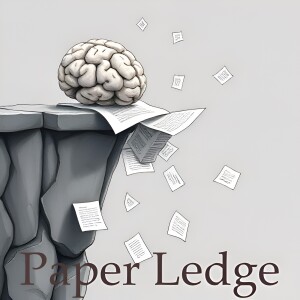
- Podcast Features
-
Monetization
-
Ads Marketplace
Join Ads Marketplace to earn through podcast sponsorships.
-
PodAds
Manage your ads with dynamic ad insertion capability.
-
Apple Podcasts Subscriptions Integration
Monetize with Apple Podcasts Subscriptions via Podbean.
-
Live Streaming
Earn rewards and recurring income from Fan Club membership.
-
Ads Marketplace
- Podbean App
-
Help and Support
-
Help Center
Get the answers and support you need.
-
Podbean Academy
Resources and guides to launch, grow, and monetize podcast.
-
Podbean Blog
Stay updated with the latest podcasting tips and trends.
-
What’s New
Check out our newest and recently released features!
-
Podcasting Smarter
Podcast interviews, best practices, and helpful tips.
-
Help Center
-
Popular Topics
-
How to Start a Podcast
The step-by-step guide to start your own podcast.
-
How to Start a Live Podcast
Create the best live podcast and engage your audience.
-
How to Monetize a Podcast
Tips on making the decision to monetize your podcast.
-
How to Promote Your Podcast
The best ways to get more eyes and ears on your podcast.
-
Podcast Advertising 101
Everything you need to know about podcast advertising.
-
Mobile Podcast Recording Guide
The ultimate guide to recording a podcast on your phone.
-
How to Use Group Recording
Steps to set up and use group recording in the Podbean app.
-
How to Start a Podcast
-
Podcasting
- Podcast Features
-
Monetization
-
Ads Marketplace
Join Ads Marketplace to earn through podcast sponsorships.
-
PodAds
Manage your ads with dynamic ad insertion capability.
-
Apple Podcasts Subscriptions Integration
Monetize with Apple Podcasts Subscriptions via Podbean.
-
Live Streaming
Earn rewards and recurring income from Fan Club membership.
-
Ads Marketplace
- Podbean App
- Advertisers
- Enterprise
- Pricing
-
Resources
-
Help and Support
-
Help Center
Get the answers and support you need.
-
Podbean Academy
Resources and guides to launch, grow, and monetize podcast.
-
Podbean Blog
Stay updated with the latest podcasting tips and trends.
-
What’s New
Check out our newest and recently released features!
-
Podcasting Smarter
Podcast interviews, best practices, and helpful tips.
-
Help Center
-
Popular Topics
-
How to Start a Podcast
The step-by-step guide to start your own podcast.
-
How to Start a Live Podcast
Create the best live podcast and engage your audience.
-
How to Monetize a Podcast
Tips on making the decision to monetize your podcast.
-
How to Promote Your Podcast
The best ways to get more eyes and ears on your podcast.
-
Podcast Advertising 101
Everything you need to know about podcast advertising.
-
Mobile Podcast Recording Guide
The ultimate guide to recording a podcast on your phone.
-
How to Use Group Recording
Steps to set up and use group recording in the Podbean app.
-
How to Start a Podcast
-
Help and Support
- Discover

Networking - Mitigating xApp conflicts for efficient network slicing in 6G O-RAN a graph convolutional-based attention network approach
Hey learning crew, Ernis here, ready to dive into some cutting-edge tech that's shaping the future of our wireless world! Today, we're unpacking a paper all about making our phone networks smarter, faster, and way more customizable. Think of it as giving our networks a serious brain boost!
The paper tackles a challenge in something called O-RAN. Now, O-RAN is like the blueprint for building next-generation wireless networks. The cool thing about O-RAN is that it’s designed to be open and flexible, kind of like using LEGO bricks instead of having to buy a whole pre-built set. This allows different companies to contribute pieces of the network, leading to more innovation and hopefully lower costs.
But here's the thing: with all this flexibility comes complexity. Imagine you’re running a restaurant. You might have different sections – a quiet area for couples, a lively bar area, and a family zone. Each needs slightly different things. O-RAN uses something called network slicing to do the same thing for our wireless networks. Network slicing is like creating virtual networks, each tailored to a specific need. So, you could have one slice optimized for super-fast gaming, another for reliable self-driving cars, and yet another for low-power smart home devices. Each gets the resources it needs, without interfering with the others.
"Network slicing is like giving each application its own dedicated lane on the internet highway."Now, to manage these slices, O-RAN uses special software applications called xApps. Think of each xApp as a mini-manager, responsible for keeping its slice running smoothly. The problem is, if you have a lot of slices (and therefore a lot of xApps), they need to work together to share resources fairly. But if they all try to communicate with each other all the time, it becomes a chaotic mess – like a crowded room where everyone is shouting at once! This constant chatter eats up valuable network resources and slows things down.
That's where this paper comes in! The researchers have come up with a clever solution to reduce this "xApp conflict." They call it Zero-Touch Management (ZTM). Basically, they want the xApps to learn how to manage resources efficiently without needing constant human intervention – or excessive communication. It's like teaching a team to work together seamlessly without needing a manager to micromanage every detail.
So, how do they do it? They use something called Multi-Agent Reinforcement Learning (MARL). Imagine teaching a group of AI agents to play a game together. Each agent (in this case, each xApp) learns from its own experiences and from observing the other agents. Over time, they figure out the best way to cooperate and achieve a common goal (which is to optimize network performance).
But the real innovation is how they streamline communication between the xApps. They use a technique called Graph Convolutional Network (GCN)-based attention. Think of it like a smart filter. Instead of each xApp listening to everyone else all the time, the GCN helps them focus on the most important information from the most relevant xApps. It's like having a conversation where you only pay attention to the people who are saying something directly related to what you're working on.
The researchers compared their new approach with traditional MARL, where all the xApps communicate freely. The results showed that their GCN-based method was significantly more efficient, especially as the number of xApps increased. This means it’s a scalable solution that can handle the growing complexity of future 6G networks.
So, why does this matter? Well, for network operators, it means they can manage their networks more efficiently and offer a wider range of customized services. For gamers, it could mean lower latency and a more immersive experience. For businesses, it could enable new applications like industrial automation and remote surgery. And for everyone, it means a more reliable and responsive wireless experience overall.
This research helps pave the way for smarter, more flexible, and more efficient wireless networks in the future.
Here are a couple of things I was thinking about while reading this paper:
- How might the introduction of AI-powered xApps change the roles and responsibilities of human network engineers?
- Could this technology be used to create truly personalized network experiences, where the network adapts to the individual needs of each user in real-time?
Credit to Paper authors: Sihem Bakri, Indrakshi Dey, Harun Siljak, Marco Ruffini, Nicola Marchetti
More Episodes
Create your
podcast in
minutes
- Full-featured podcast site
- Unlimited storage and bandwidth
- Comprehensive podcast stats
- Distribute to Apple Podcasts, Spotify, and more
- Make money with your podcast
It is Free
- Privacy Policy
- Cookie Policy
- Terms of Use
- Consent Preferences
- Copyright © 2015-2025 Podbean.com





